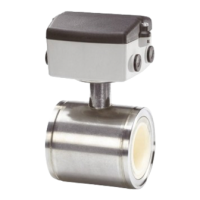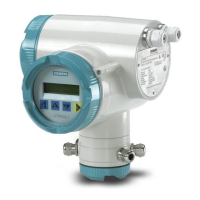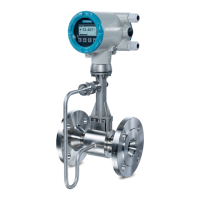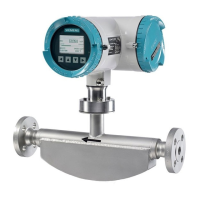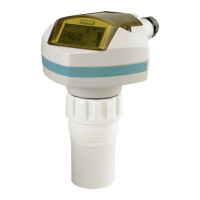2-40
1010ENFM-3B
Section 2
2.6.8 CE Method (optional) (refer to www.Engineering Toolbox.com)
Siemens FUE1010EN ultrasonic energy flowmeters can be configured to provide an Energy Efficiency
output. Modifications were implemented using the standard FUE1010EN analog input spanning methods
in an effort to simplify operator monitoring of air conditioning efficiency data. These changes allow the
flowmeter to calculate chiller efficiency. The flowmeter calculates chiller or heating efficiency through
use of an available analog input, which can be assigned to represent power consumption (kW).
kW/ton Cooling Load in kw/ton. Commonly used for large commercial and industrial air-
conditioning, heat pump and refrigeration systems. kW/ton is defined as the ratio of the
rate of energy consumption in kW to the rate of heat removal in tons at the rated condition.
The lower the kW/ton the more efficient the system.
kW/ton = P
c
/ E
r
where P
c
= energy consumption (kW)
E
r
= heat removed (ton)
COP Coefficient of Performance. COP is the basic unit less parameter used to report the
efficiency of refrigerant based systems. COP is the ratio between useful energy acquired
and energy applied.
COP = E
u
/ E
a
where E
u
= useful energy acquired
E
a
= energy applied.
COP can be used to define both cooling efficiency or heating efficiency as with a heat pump.
z For cooling, COP is defined as the ratio of rate of heat removal to the rate of energy input to the
compressor.
z For heating, COP is defined as the ratio of the rate of heat delivered to the rate of energy input to
the compressor.
COP can be used to define the efficiency at a single standard or non-standard condition or a weighted
average seasonal condition. The term may or may not include the energy consumption or auxiliary
systems such as indoor or outdoor fans, chilled water pumps, or cooling tower systems. For purposed
of comparison the higher the COP the more efficient the system.
COP can be treated as an efficiency where COP of 2.00 = 200% efficient. For unitary heat pumps,
ratings at two standard outdoor temperatures of 47°F and 17°F (8.3°C and -8.3°C) are typically used.
EER Energy Efficiency Ratio. EER is used to define the cooling efficiency of unitary air con-
ditioning and heat pump systems.
The efficiency is determined at a single rated condition specified by the appropriate equipment standard
and is defined as the ratio of net cooling capacity (or heat removed in Btu/h) - to the total input rate of
electric energy applied (in watt hours). The units of EER are Btu/w.h.
EER = E
c
/ P
a
where: EER = energy efficient ratio (Btu/w.h)
E
c
= net cooling capacity (Btu/h)
P
a
= applied energy (w.h)
EER typically includes the energy requirement of auxiliary systems such as indoor and outdoor fans.
The higher the EER the more efficient the system.
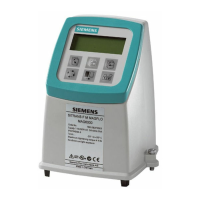
